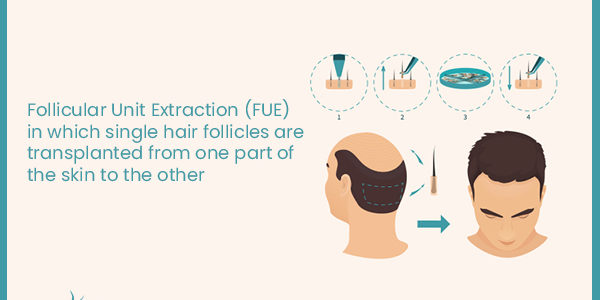Hair transplant is often under discussion because almost 42% of all men suffer from some level of hair loss, either mild or extensive. That’s nearly half the male population, not to mention that women can also be subjected to this problem.
Modern technology and advancements in science allow us to offer a solution to this prevalent issue that impacts a person’s confidence. This process is called hair transplant. There are two types of procedures available.
There is Follicular Unit Extraction (FUE) in which single hair follicles are transplanted from one part of the skin to the other, and then there is Follicular Unit Strip Surgery (FUSS). In this second type of surgery a thin strip of skin with healthy hair is removed, cut into smaller grafts which are then transplanted on to the affected areas.

However, whichever type of treatment you are getting, you first need to make sure that you are a suitable candidate for it. This is so the probability of a complication or infection occurring after the procedure can be minimized.
In this blog we will be discussing some of the standards based on which suitability for the procedure is determined.
Who is the right candidate?
These are the main characteristics of a person who will be considered fit for this procedure:

⦁ Someone (usually male but it can be performed on females too) who has been suffering from consistent hair loss for at least 5 years.
⦁ Someone whose pattern has stabilized, meaning their bald patch is not at its early stages and has matured.
⦁ Someone who is suffering from pattern baldness, or hair loss due to burns, other cosmetic procedures or other trauma.
⦁ Someone who is healthy enough to be able to bounce back from a minor surgery like hair transplant
⦁ Someone without scalp diseases
⦁ Someone with the right amount of scalp flexibility for the treatment
⦁ Someone with the right hair type and thickness. Thicker hair with a wave or curl is best suited for this treatment.
An additional quality of a good candidate is someone whose hair colour blends in well with their skin colour. This will mean that they will need fewer sessions because if there isn’t a stark difference between the hair and skin colour then the scalp isn’t too prominent underneath the hair. In this way baldness can be hidden with fewer hair follicle transplants.
A word of caution
Please make sure that you thoroughly discuss any skin or hair issues you have with your doctor before the procedure. Also let them know if you are taking any blood thinning medication, hair loss prevention medication or any other.

If your body has reacted poorly to a treatment before, your hair transplant surgeon should be made aware of it. This is so they can make an informed decision about your case. The aftercare may also vary then and it is better for the patient if the doctor is fully informed about the patient’s medical history.
Full disclosure will greatly decrease the chances of any complications occurring after the treatment is done.
We hope this cleared up some of the confusions you have.
Disclaimer
This blog, however, should not be taken as a scientific guide to whether or not you should get surgery. For that purpose we urge you to visit a doctor, at our clinic or any other, and get a professional consultation.
It is best if you go to the same doctor for consultation who you want to get the treatment done by. This will ensure that they know your history and will be able to keep it all in mind during the treatment too.





